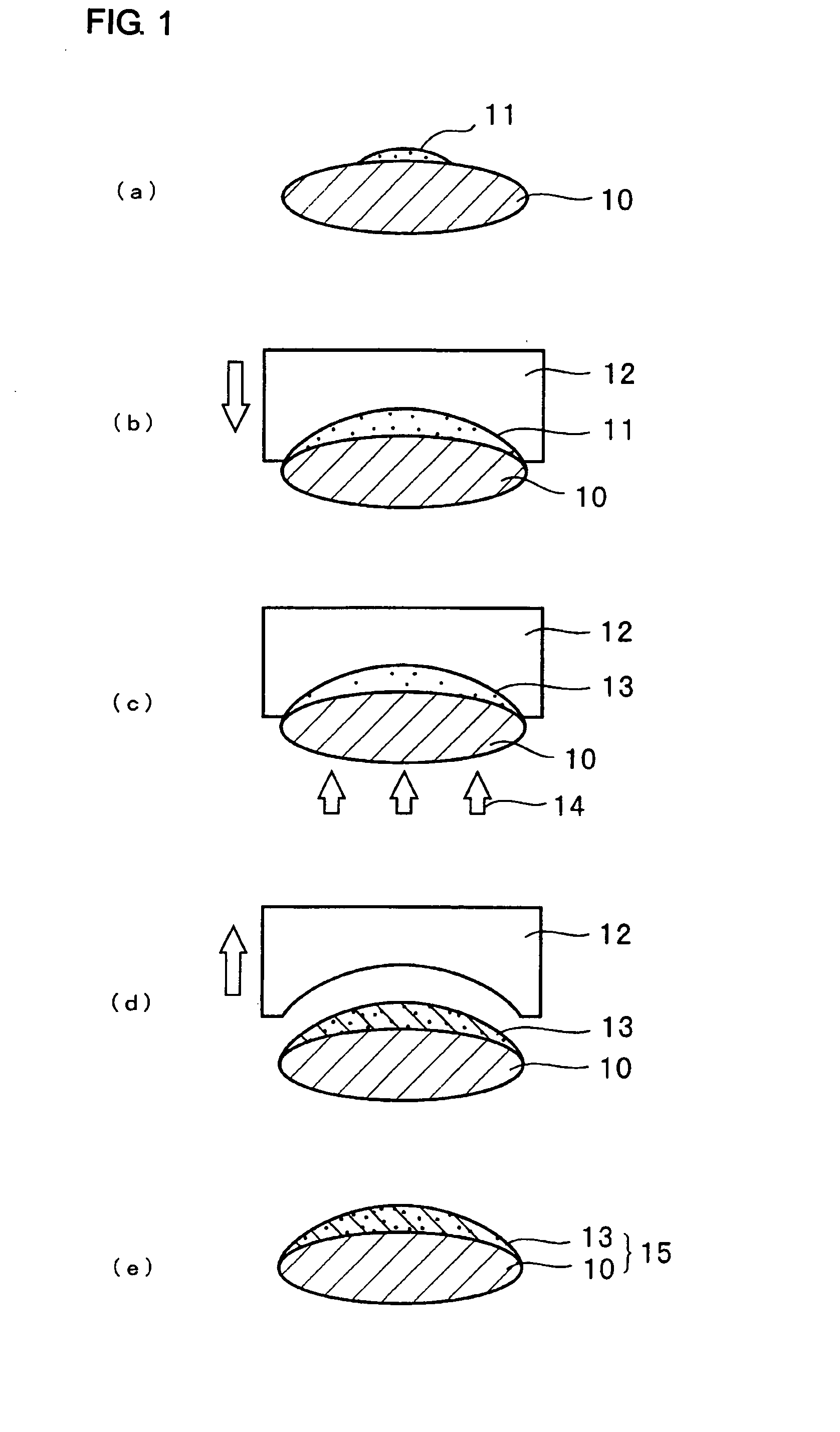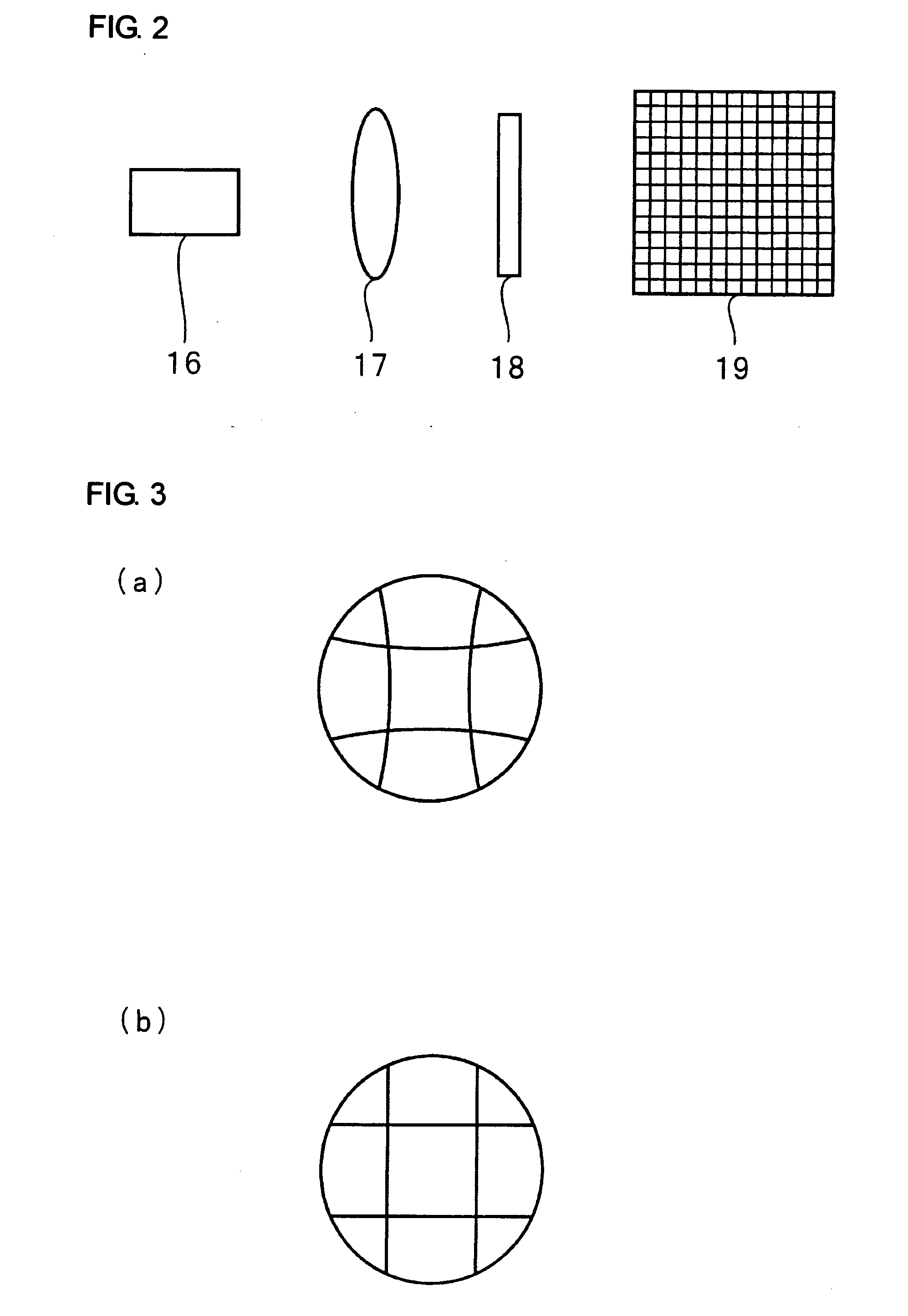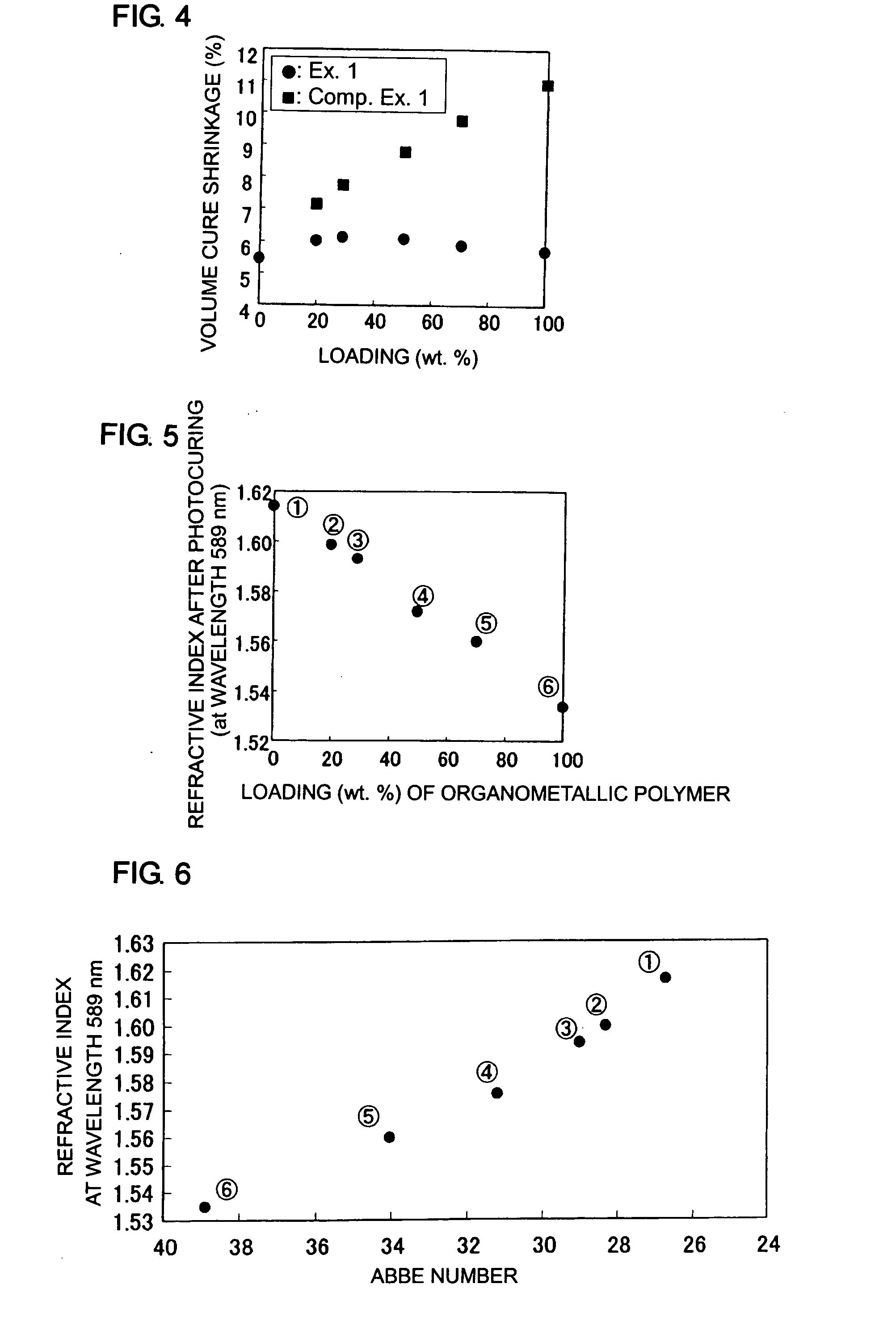Curable organometallic composition, organometallic polymer material and optical component
a polymer material and organometallic technology, applied in the field of curable organometallic composition, can solve the problems of high glass price, high fabrication cost, low heat resistance, etc., and achieve the effects of high refractive index, superior heat resistance, and low volumetric shrinkag
- Summary
- Abstract
- Description
- Claims
- Application Information
AI Technical Summary
Benefits of technology
Problems solved by technology
Method used
Image
Examples
example 1
[0088]A fluorene acrylate having the above-specified chemical structure (where, m=1 and n=1) was used as the fluorene-based compound.
[0089](Viscous Liquid A)
[0090]10 g of the fluorene acrylate, 0.2 g of 1-hydroxy-cyclohexyl-phenylketone, 0.05 g of HALS (Tinuvin 292, product of Chiba Specialty Chemicals Inc.), 0.15 g of a U absorber (Tinuvin 400, product of Chiba Specialty Chemicals Inc.) and 1.43 g of benzyl methacrylate were mixed while heated at 60° C. to obtain a viscous liquid A.
[0091](Viscous Liquid B)
[0092]15.3 ml of an organometallic compound A in the form of 3-methacryloxypropyltriethoxysilane, 6.3 ml of an organo-metallic compound in the form of diphenyldimethoxysilane, 3.8 ml of an aqueous solution containing hydrochloric acid (2N conc. hydrochloric acid) as a reaction catalyst and 40 ml of ethanol were mixed and then allowed to stand for 24 hours, during which time the organometallic compounds A and B were hydrolyzed and polycondensed.
[0093]The resulting liquid containing...
example 2
[0112]The procedure of Example 1 was followed, with the exception that the organometallic polymer was loaded in the amount of 29% by weight and benzyl methacrylate was excluded from the viscous liquid A, to prepare a curable organometallic composition. This composition was cured to measure its volumetric cure shrinkage. Also, the refractive index, Abbe number and temperature coefficient of refractive index of the cured composition were measured.
[0113]The measurement revealed a volumetric cure shrinkage of about 5.1%, a refractive index of about 1.60, an Abbe number of about 28 and a temperature coefficient of refractive index of about −1.6×10−4.
example 3
[0117]In Example 1, 3-mercaptopropyltrimethoxysilane was used as the organometallic compound A in the preparation of the viscous liquid B. Specifically, 9.8 ml of this organometallic compound A, 6.3 ml of the organometallic compound B, 3.8 ml of the conc. 2N hydrochloric acid and 40 ml of ethanol were mixed and then allowed to stand for 24 hours, during which time the organometallic compound A and the organometallic compound B were hydrolyzed and polycondensed.
[0118]The resulting liquid containing a polycondensate was placed under nitrogen gas atmosphere and heated to 100° C. to remove, by evaporation, ethanol and methanol produced during the reaction. The resulting liquid serving as the viscous liquid B was mixed with the viscous liquid A so that the mixture contained the organometallic polymer in the amount of 29% by weight. As a result, a curable organometallic composition was prepared.
[0119]The obtained curable organometallic composition was cured in the same manner as described...
PUM
| Property | Measurement | Unit |
|---|---|---|
| shrinkage | aaaaa | aaaaa |
| wavelength | aaaaa | aaaaa |
| thickness | aaaaa | aaaaa |
Abstract
Description
Claims
Application Information
 Login to View More
Login to View More - R&D
- Intellectual Property
- Life Sciences
- Materials
- Tech Scout
- Unparalleled Data Quality
- Higher Quality Content
- 60% Fewer Hallucinations
Browse by: Latest US Patents, China's latest patents, Technical Efficacy Thesaurus, Application Domain, Technology Topic, Popular Technical Reports.
© 2025 PatSnap. All rights reserved.Legal|Privacy policy|Modern Slavery Act Transparency Statement|Sitemap|About US| Contact US: help@patsnap.com



